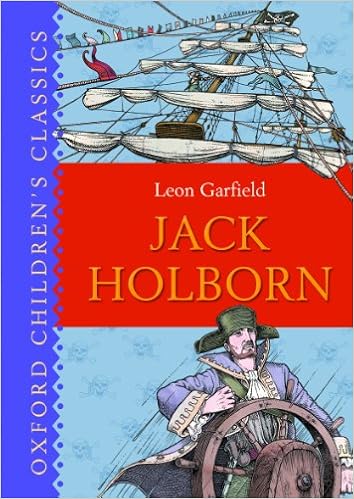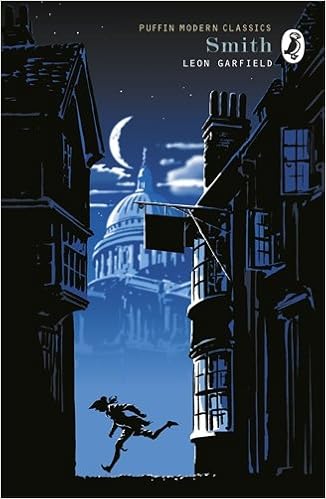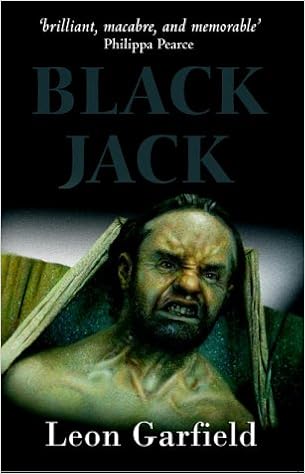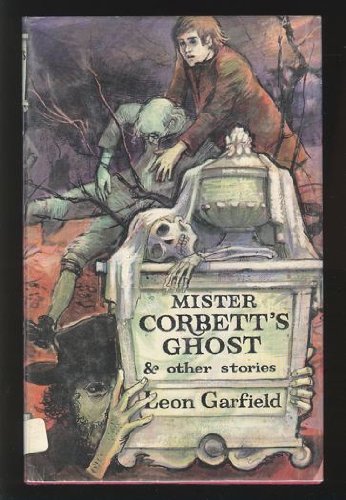I enjoyed compiling my best 15 reads of last year, so I thought I would do it again. Like last year’s list, this is a compilation of my favourite books I have read, rather than books that have come out.
Reading this back to myself, I seem rather down on many of these books but I promise each one of the books on this list gave me a great deal of pleasure. So, here we are...
In at number 15…
The London Spy - Ned Ward
It started off brilliantly, Ned Ward can whip a character sketch and tell a dirty joke with great vivacity and pleasure. His delight in jotting down every disgusting thing Londoners in 1700 did and said to each other in various low-down, dirty dives was initially fascinating. It’s just that 300-odd pages of people throwing ‘sir reverence’ at each other and putting things up each other’s bottoms did get a little dull.
Full review coming shortly-ish.
Number 14
The Sound of Coaches - Leon Garfield
Set in the world of coachman and coaches, this novel shed light on an area of eighteenth century life that I had never read anything about. Halfway through this became the more usual Garfield trope of the travelling performer, this was saved from being boring due to his very interesting reflections on the nature of performance and identity - especially as it pertained to the protagonist’s inner turmoil between the sturdy coachman part of his life and the flibbertigibbet actor side.
This conflict was resolved in a surprisingly low key and mature way, which endeared the book to me more. While it is good to have mad axe-murderers running rampage around London, sometimes it is also good to end up with compromise and growing up.
At number 13…
The Book of Werewolves - Sabine Baring Gould.
I did pick up this book with the hope that it was going to start with the assumption that werewolves were real and that werewolf stories were indeed history but it was a more layered work than all that.
Baring-Gould’s position is that werewolf (and other shape-changing animal) stories point to a certain mental illness, or even demonic possession, in common. The book was a mish-mash, taking in legends from all around Northern Europe, comparing and contrasting them. The book finishes off with a tour-de-force description of Gilles de Retz, a 15th century French nobleman who did horrible things to small children.
One of the most interesting elements of the book was a reflection on how much the werewolf myth has changed in the hundred-odd years since its publication. There is no mention of silver bullets, no war with vampires and no full moon. Werewolf transformations are the result of potions, curses, magic animal pelts and other witch-like magics. The older werewolf stories in this book are more vicious and more earthy. Most often the werewolf chooses to be that way in order to feel the thrill, the bloodiness of the wolf state is just a reflection on the bloodiness of humanity in its own pure form.
This was the kind of book I like, it told me slightly more than I wanted to know about a topic I hadn’t much considered.
In at number 12…
Grub St Stripped Bare - Phillip Pinkus.
I bought this the same time as Pat Rogers book ‘Grub Street’. I read that a few years ago and now finally got around to this. The two could hardly be more different.
Rogers’ book is a painstakingly scholarly description of how a real street was used as a term of denigration for hack-writers, and the social and critical ways this metaphor was used to despair of the direction literature was taking. Phillip Pinkus’ book is more a miscellany of vibrant Grub street writings put into broad context by some pretty perfunctory text in-between.
Though I respect the Rogers’ text more, and learnt more from it, the Pinkus book was far more enjoyable. His selection of texts focus on the vicious, bitchy and endearing aspects of the Grub Street Persona. There was a lot of life and the texts themselves and the sketchy biographies that surround them and I had a good ol’ time.
Definitely less incisive or authoritative than Pat Roger’s book but more entertaining and probably more in line with the rough and tumble spirit of Grub Street.
Number 11…
Anatomy of Melancholy (Third Partition) - Robert Burton
I finally did it! Got to the end of this beast.
The third partition was the most entertaining of the three.
Burton is very funny talking about love, he is obviously a man of affections and humour and it shines through very well. Like Johnson, I prefer it when he writes in his own voice because you get a true sense that Burton would have been a great person to spend a bit of time with.
One thing that struck me was his tolerance of women. In the love melancholy section, he made use of a great many misogynistic texts, damning woman in every conceivable way. He merely laughs at the pettiness of those writers, points out that most of them changed their mind eventually and says that everything said about women could just as easily be applied to men. The conclusion to the love melancholy section was that while marriage could cause unhappiness, if the match was sensible, not too guided by money or looks, then it was the best route for happiness there was.
I particularly liked his ‘cure’ for a man wracked by sexual jealousy, marry a strumpet and at least he’d know he was being cheated on.
The religious melancholy bit was very interesting, a lot of the comments he makes that were directed to the extremes of the christian factions in the run up to the civil war could just as easily be applied to the extremists that abound now. On a historical note, it was interesting to see how knowledgeable he was about Islam, more than Donald Trump certainly.
The very last bit on despair dragged though - too Bible heavy for me and even more repetitive than usual. I could read about melancholy for page after page but despair, which is the particularly biting sense of melancholy that leads to suicide, is not an easy subject to read much on.
At number 10…
The Recollections of Rifleman Harris - Benjamin Harris (sort of).
This was a vivid, exciting and authentic account of one rifleman’s peninsular campaign as dictated to a local writer.
We get the personal details, the weight of the backpack, the petty worries of the solders and most strangely, the causal and blasé attitude to the carnage. I imagine part of this tone was the time that had elapsed since the war and its telling and Benjamin Harris’s wish to look brave and cool in the face of danger but part of it did also seem to be a general acceptance of the blood and guts of fighting in an era that had powerful firearms but very little personal defence.
His account of the retreat after Vigo and the Walcheran sickness was very moving and really painted the picture of a desperate march. It also revealed a little about the soldiers, that they were happiest fighting.
The description is plain and clear and it is very easy to put yourself in his position and to ask that most pointless but interesting question. ‘what would I do?’
In at number 9…
Mrs Frisby and the Rats of NIMH - Robert C O’Brien.
You may have seen the film, I hadn’t but did straight after - it’s a good adaption. This book is probably the American equivalent of Watership Down. Decidedly more domestic, Mrs Frisby is a widower who would go to any lengths to save her children, especially her sickly youngest.
It’s a moving story of the strength she finds in herself and there is also an interesting mystery in there about the titular rats of NIMH and their relation to her husband. I recommend this as a very involving and emotional journey played a little more subtly than the film.
(Just after this I read ‘The Phantom Tollbooth’, that would be the top of my ‘worst of’ list if I had one).
At number 8…
Updike Willow - Christopher Soul.
I almost wasn’t going to put this book on the list as it was written by a friend of mine but I did anyway. It’s about the rocky and peculiar life of Updike Willow in the first 20-odd years of life.
I was utterly gripped for the first half of the book, there was so much in it I could connect with. I recognised characters from life, I knew many of the locations and some of the events had a deep resonance within me.
It also revealed the difference between myself and the author - in this book, every drunken episode is followed by a hangover, there is a punishingly grittiness to the book that makes the moments of sweetness shine all the better.
In at number 7…
Unspeakable Curll - Ralph Strauss.
Wonderfully written, it presents Curll as a pretty loveable rogue with a definite sense of principles - even if pretty twisted ones. The tone is fantastic, full of brash love for its brash hero. I have reviewed it in full so read more there, or find a copy of the book.
Number 6…
Marginalia: Readers writing in Books - HJ Jackson.
Fascinating book about writing notes in books. It included history, the psychology and purposes of writing and gave examples of cases.
One of the things that most thrilled me were the number of marginalia from the notes of people I am interested in, writing in the books of other people I am interested in. It really opened my eyes to why people mark in books, those who use it as dialogue, as argument or even as a way to chat someone else up.
It made me think of why I mark books when I do and what I’m trying to say. Any book that opens a new thing to think about suits me.
At Number 5…
Cloudstreet - Tim Winton.
I was challenged to read this as it is relatively modern. It’s an Australian, broadly magical realist tale of the life of two families who share a large haunted house in Perth.
At first I was irritated by the style. There was a little too much of the modern writer’s malady - trying to sound clever. The writer tried a little too hard at times, the obsfucation in the writing was sometimes off-putting. He also had a way of conjoining words that seemed irritatingly mannered. Like pointing out a ‘skyblue boat’ or someones ‘hammy crotchstink’.
Though as I read it, I began to be taken out of the text less and less, I started rooting for the characters, longing them to be happy and to find a place. Much like ‘A Hundered Years of Solitude’, the book used the magical elements (a ghost, an aboriginal man, the air of luck) to illustrate the character’s inner lives.
It’s a book about belonging to something. It frequently makes you feel very gloomy or smile out loud. Ultimately it makes you long for a Cloudstreet of your own. The moments were always well chosen, the main characters winning and the texture and emotion of the book kept you flowing.
Number 4…
Vanity Fair - William Makepeace Thackery.
Written in a brilliantly Fielding-esque style but darker, more sinister and generally sourer. Too sour sometimes.
I liked Becky and Amelia at first but as the book carried on and their positions in it were set, they became less interesting and my focus pulled over to the secondary characters. I grew to like. the Crawley lot especially, particularly the cantankerous old woman who held the purse strings. It was noticeable that by her death, she had withered away and become pathetic, which was sort of the case with all the characters in the book. It really does make you feel the time that is passing and the changes to everyone in that time in a way books very rarely do.
I would have put it even higher were it not for the fact that the last 50 pages seemed completely extraneous.
At number 3…
Wuthering Heights - Emily Bronte.
Strange and full of passions, this book really hooked me. I was lost in the characters and the deep dark and moody atmosphere of the piece, it had me galloping through it.
Although, every now and then a little voice in my head would complain that no characters in the book acted like real life people. Most of the time I was too engrossed in the driving emotion of it all for this to really bother me but if kept niggling.
I came to the conclusion that had I read this book when I was about 15, I would have utterly adored it and would regard Wuthering Heights as one of my favourite books ever. That was the problem with it - the characters didn’t think, act or feel like ‘real’ people but like teenagers.
I would heartily recommend this to anyone who hasn’t read it yet, it’s deep and involving read.
In at number 2…
Black Jack - Leon Garfield.
I read so much Garfield this year that it was statistically likely he would turn up more than once, but had this been the only Garfield book I read, it would be up here. This book marries Garfield’s goofy set-pieces, vivd description and skilful wordplay with his best characters and most intriguing plot.
I’ve written more about it in my Leon Garfield reviews, so no need to blether now and get onto -
Number 1….
Orlando Furioso - Ludovico Ariosto, translated and abridged by David Slavitt.
This translation really asks questions about the nature of the art. How much of this book is Slavitt’s and how much Ariosto’s?
Slavic takes a Princess Bride approach, chopping out whole cantos to make a ‘good bits’ version. The comparison to Princess Bride is furthered by his fondness for bad puns, silly rhymes and some anachronistic humour.
In some ways it doesn’t matter who’s book it is, as long as I enjoyed it. Which I did enormously. It is such an epic, daft story with sea monsters and hermits and fair maidens and knights who care more for the rules of chivalry then their lives.
Each knight is described as unbeatable, each horse is the fastest, each weapon or piece of armour is enchanted and each maiden is the most beautiful than all the rest.
We have four main hero knights. On the Christian side is Orlando and Rinaldo and on the Muslim side is Rodomonte and Ruggerio.
Then there are the lesser knights, Astolfo, Gryphon, Sacripant, Marisa and Bradamante - the last two being women.
Rugger was my favourite, and he was probably the main character. This was because out of all the hero knights, he was the least likely to succeed. His girlfriend had to save him from at least three enchanted castles; he lost battles with dog-faced men, giants and a sea monster - but he came through at the end and killed Rodomonte.
Rodomonte was a prick. He killed most of Paris single handed and then did some weird thing with the bridge. Rinaldo was a tad boring and Orlando netted a sea monster and then went mad, stripping naked, punching donkeys and tearing people in two.
When the book is full of action or silliness, Slavitt delivers. He loves the coincidences, the improbable action and the ‘boys toys’ element of the knightly adventure.
The translation really does get questionable when he translated Ariosto’s views on chivalry, or Christianity, or the virtue of pure womanhood. Those medieval sentiments do not work with his modern tone.
If the aim of the book was to entertain and introduce me to the world of Orlando Furioso, then the translation did very well. But if it was supposed to be an authentic translation (rather then retelling) then I am very sceptical.











